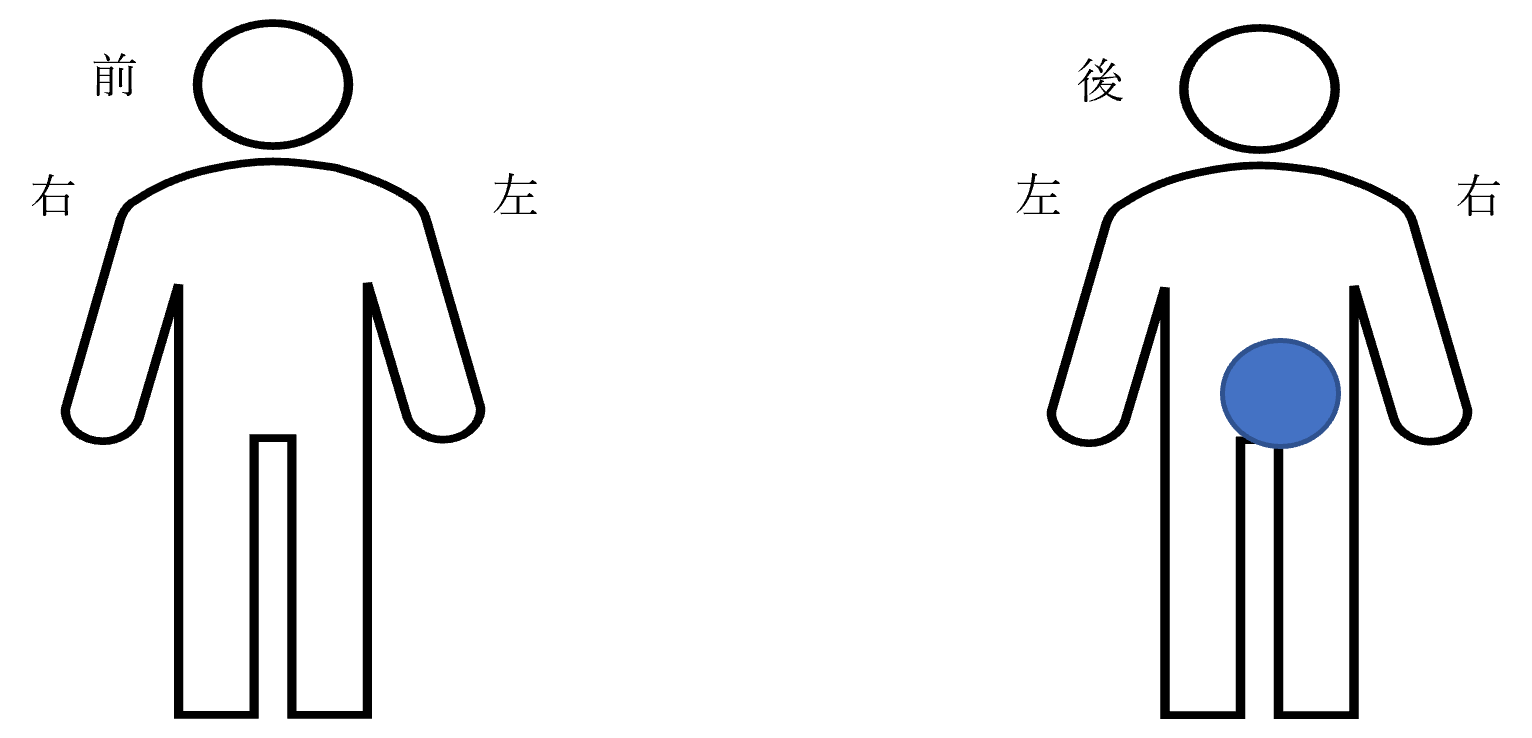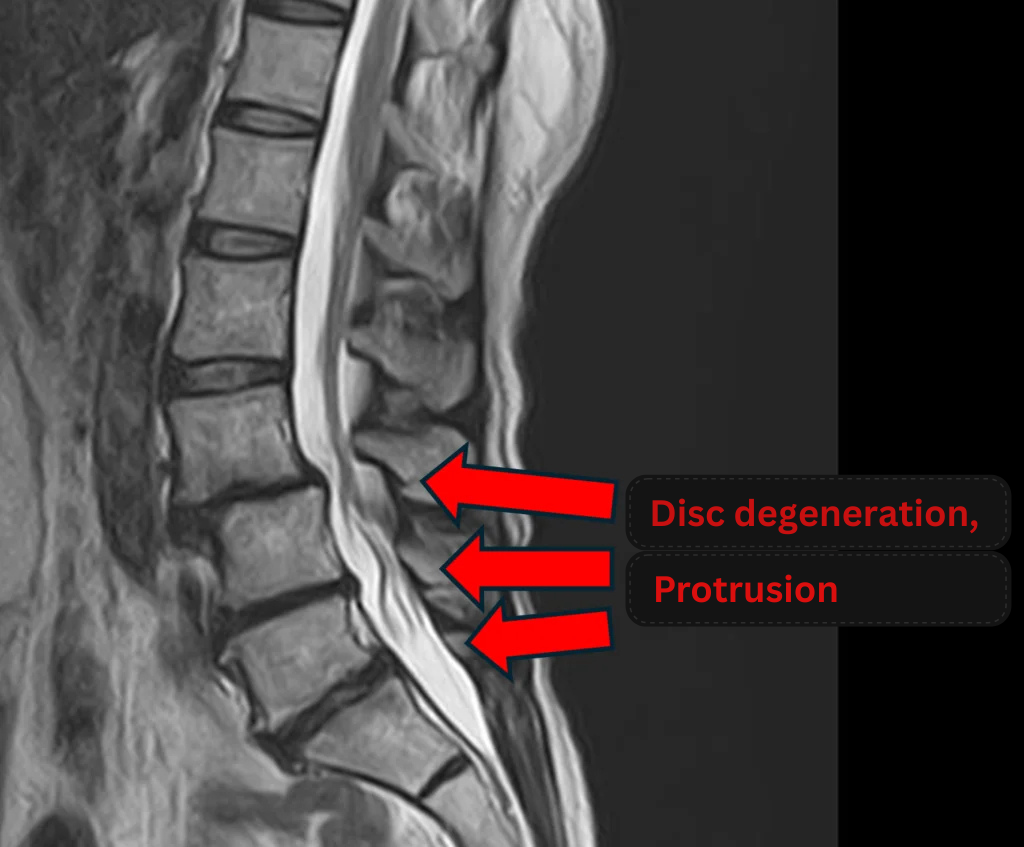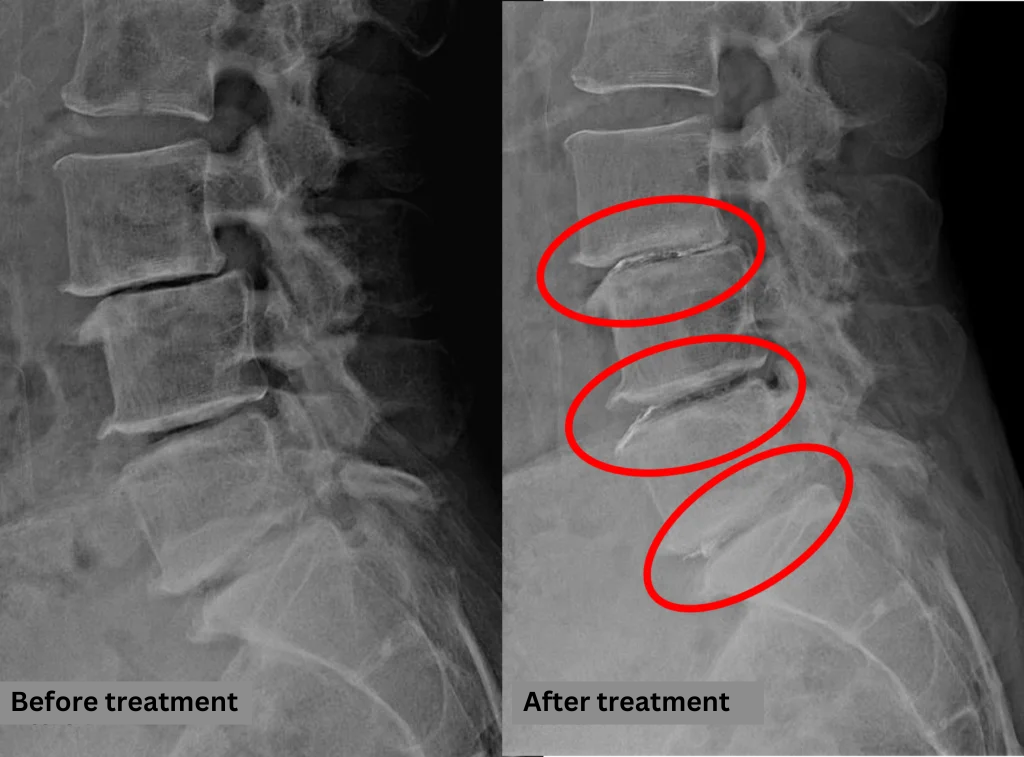Column Treatment Case Report No. 132| ILC International Lumbago Clinic (Osaka Clinic)
May 01, 2025
The patient
A female patient in her 50s.
The patient’s medical history to date
The patient was diagnosed with spondylolisthesis on disc L5 when she was in junior high school.
She has been experiencing dull pain for the past 5 years, and pain in her neck and back for the past 1 year.
She also has congenital developmental dysplasia of the hip (DDH), and she was told at another hospital that treatment of the hip joint should take precedence over that of the lower back.
So far she has postponed hip surgery because she felt that it was too early to undergo such surgery at her age.
Painkillers and pain patches have been effective so far, but she is concerned that they do not provide a fundamental cure for her condition.
She came to our clinic seeking a fundamental improvement for her symptoms.
Symptoms before treatment
Symptoms predominantly on the right side.
No numbness.
Turning in bed: somewhat difficult
Standing up: no problem
Washing one’s face: somewhat difficult
Semi-crouched position, prolonged standing: extremely difficult
Prolonged sitting: extremely difficult
Lifting and carrying heavy objects: extremely difficult
・Pain levels before treatment
| Lower back | Lower limbs | Numbness | Buttocks | |
|---|---|---|---|---|
| Pain level | 8 | 1 | 0 | 2 |
No pain at all is rated as 0, and the maximum possible pain is rated as 10.
Main areas of pain and numbness: lower back, right lower limb.

Bending forward: no change
Bending backward: no change
Lasegue test: negative
Lumbar point of tenderness: slight aggravation on disc L4/5 on the right side
Coughing and sneezing: no strong aggravation
Additional explanations on our clinic’s medical examination
Imaging and findings

- L3/4 – disc degeneration, protrusion, spinal canal stenosis, foraminal stenosis, degenerative spondylolisthesis
- L4/5, 5/s – disc degeneration, protrusion, foraminal stenosis
The above findings were also observed on the imaging.
Findings show that compression of the spinal canal on discs L3/4, 4/5, and 5/s is the probable cause of the symptoms.
Treatment
After consulting with the patient, the Cellgel Method was performed on L3/4, 4/5 and 5/s.
The treatment was performed by Dr. Ohara.

The treatment took about 80 minutes.
After resting in the recovery room, the patient was able to walk home by herself.
Our clinic’s treatment method
Additional information about the Cellgel method we have introduced in this column.
Cost of the Cellgel method: 1,320,000 yen per area (including tax) to 1,760,000 yen per 5 areas (including tax)
Risks and side effects of the Cellgel method: Transient pain may occur after treatment. Nerve damage is not a zero possibility due to the very nature of the treatment, but there have been no reports of damage so far in either report cases or publications. There is a very small possibility of allergic reactions to local anesthetics. Symptoms may temporarily worsen during the first week or two after treatment. This is believed to be due to the decompression effect of the implant, which retracts the surrounding tissues. In addition, if the disc is almost completely collapsed, treatment may be difficult. The doctor hold a consultation with you during your visit to the clinic to determine the best treatment option for your condition.
For more detailed information, please refer to the following links:
Blog page explaining the Cellgel Method in an easy-to-understand manner
The Cellgel Method on our treatment methods page
This article was written by the Administrative Director of our clinic



